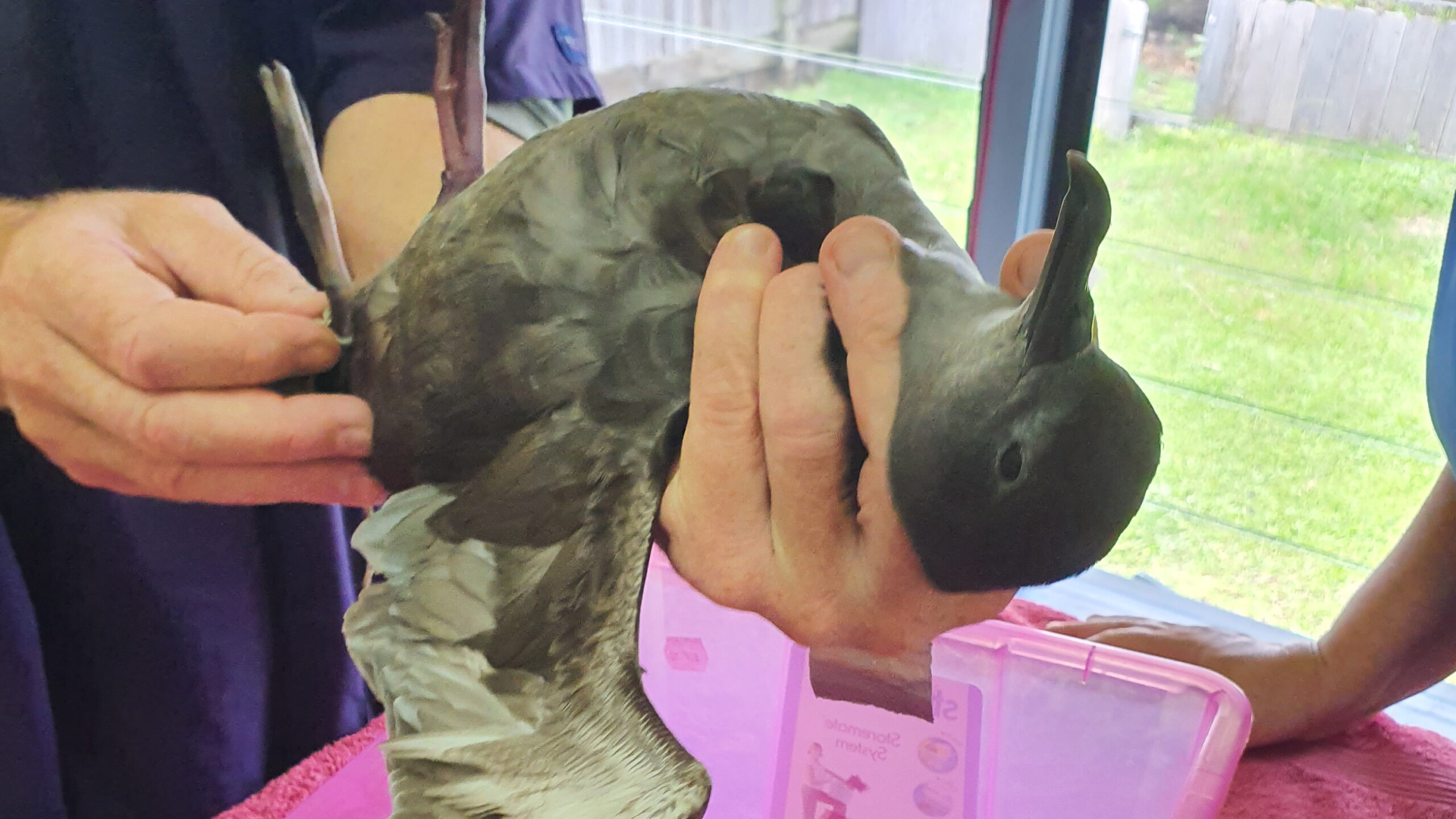Sooty Shearwater shows up in Avarua
Saturday 18 December 2021 | Written by Supplied | Published in Environment, National

Sooty Shearwater recently found at the Punanga Nui Market, during last week’s heavy rainfall period. TIS/21121741
Rarotonga had a surprise drop in visitor – an injured Sooty Shearwater (Ardenna grisea) was found at the Punanga Nui Market last week.
Sunshine George contacted us at Te Ipukarea Society and we managed to enlist the help of Steph Jansen from the Discovery Centre to assist with the recuperation of the bird.
Te Are Manu Vet Clinic confirmed that this bird had a broken leg and it weighed in at a hefty 577 grams. The vet advised that the bird would lose its leg and would not have the best shot at life, one leg down. On this advice it was agreed best to put the bird out of its misery, and so it was put down.
While this of course wasn’t the outcome anyone had hoped for, it was lovely to see a Sooty Shearwater up close and learn more about them.
It was also nice to once again see how our community shows care for animals in need. From the kind people who found it and kept it safe, to the offers of help and the awesome volunteers at Te Are Manu.
Sooty Shearwaters are known in New Zealand (NZ) as tītī or muttonbird. They have a dark plumage, hence the name ‘sooty’ and have a very powerful style of flight. Their stiff wings don’t so much flap, as ‘shear’ from side to side, wingtips almost touching the water.
These birds are spectacular long distance travellers, averaging 500km per day. From March, after the nesting season, they head up the west side of the Pacific to the northern hemisphere to feed. From September to October, they return south but this time down the eastern side of the oceans, usually reaching the breeding colonies in the southern hemisphere by November. Nesting is mostly in NZ and also in the Falkland Islands, Chile and the south east coast of Australia.
It is very likely our Sooty was returning south to its breeding colony when it sustained its injury, either at sea or on landing, after being drawn in by the Avarua harbour lights.
In NZ there is some controlled harvesting of the birds for food, oil and feathers in the islands around Rakiura (Stewart Island), managed entirely by Rakiura Māori.
Fun fact, it was the sooty shearwater that inspired the Alfred Hitchcock 1963 thriller, ‘The Birds’, a cautionary tale of nature revolting against humans. The incident that inspired the film was in Monterey Bay, California where thousands of the birds were seen flying around crazily and crashing into things. Turns out they had been poisoned, most likely from a toxic algal bloom caused from leaky septic tanks. Sound familiar?
While this is an abundant species, there is evidence of a decline in numbers. The IUCN Red List identifies the Sooty Shearwater as ‘Near Threatened’. Known threats include being captured in longline, trawl and gill-net fisheries. It is also preyed on by cats and rats, especially when breeding in burrows. Climate change also affects food sources due to changing ocean currents. This can impact on the birds’ foraging patterns, potentially reducing their abundance and survival rate.
If you ever come across one of these impressive seabirds on land, chances are they were drawn in by the bright harbour or airport lights. Or they may have come to land to recuperate from bad weather.
To avoid the chance of injured or shocked birds being killed by roaming cats or dogs, people are advised to keep the bird in a cardboard box, which keeps them calm and safe. Our friends at Te Are Manu can also help assess any injuries that may need attention, before flying off again.




































